
The Metropolitan Museum of Art, colloquially referred to as the Met, is an encyclopedic art museum in New York City. It is the largest art museum in the Americas and the fourth-largest in the world. With 5.36 million visitors in 2023, it is the most-visited museum in the United States and the fourth-most visited art museum in the world.

The State Hermitage Museum is a museum of art and culture in Saint Petersburg, Russia. It was founded in 1764 when Empress Catherine the Great acquired a collection of paintings from the Berlin merchant Johann Ernst Gotzkowsky. The museum celebrates the anniversary of its founding each year on 7 December, Saint Catherine's Day. It has been open to the public since 1852. The Art Newspaper ranked the museum 10th in their list of the most visited art museums, with 2,812,913 visitors in 2022.

The Royal Ontario Museum (ROM) is a museum of art, world culture and natural history in Toronto, Ontario, Canada. It is one of the largest museums in North America and the largest in Canada. It attracts more than one million visitors every year, making it the most-visited museum in Canada. It is north of Queen's Park, in the University of Toronto district, with its main entrance on Bloor Street West. Museum subway station is named after it and, since a 2008 renovation, is decorated to resemble the ROM's collection at the platform level.

Cosmosphere is an international science education center and space museum in Hutchinson, Kansas, United States. It was previously known as the Kansas Cosmosphere. The museum houses over 13,000 spaceflight artifacts—the largest combined collection of US and Russian spaceflight artifacts in the world, and is home to various space educational programs.

Derby Museum and Art Gallery is a museum and art gallery in Derby, England. It was established in 1879, along with Derby Central Library, in a new building designed by Richard Knill Freeman and given to Derby by Michael Thomas Bass. The collection includes a gallery displaying many paintings by Joseph Wright of Derby; there is also a large display of Royal Crown Derby and other porcelain from Derby and the surrounding area. Further displays include archaeology, natural history, geology, military collections and world cultures. The Art Gallery was opened in 1882.
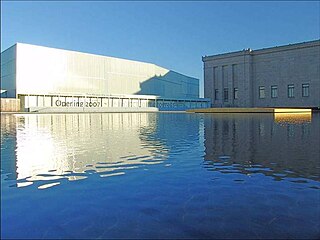
The Nelson-Atkins Museum of Art is an art museum in Kansas City, Missouri, known for its encyclopedic collection of art from nearly every continent and culture, and especially for its extensive collection of Asian art.

Rose-painting, rosemaling, rosemåling or rosmålning is a Scandinavian decorative folk painting that flourished from the 1700s to the mid-1800s, particularly in Norway. In Sweden, rose-painting began to be called dalmålning, c. 1901, for the region Dalecarlia where it had been most popular and kurbits, in the 1920s, for a characteristic trait, but in Norway the old name still predominates beside terms for local variants. Rose-painting was used to decorate church walls and ceilings. It then spread to wooden items commonly used in daily life, such as ale bowls, stools, chairs, cupboards, boxes, and trunks. Using stylized ornamentation made up of fantasy flowers, scrollwork, fine line work, flowing patterns and sometimes geometric elements give rose-painting its unique feel. Some paintings may include landscapes and architectural elements. Rose-painting also utilizes other decorative painting techniques such as glazing, spattering, marbleizing, manipulating the paint with the fingers or other objects. Regional styles of rose-painting developed, and some varied only slightly from others, while others may be noticeably distinct.

Selborne is a village in Hampshire, England, 3.9 miles (6.3 km) south of Alton, and just within the northern boundary of the South Downs National Park. The village receives visitors because of its links with the naturalist Revd. Gilbert White, a pioneer of birdwatching.
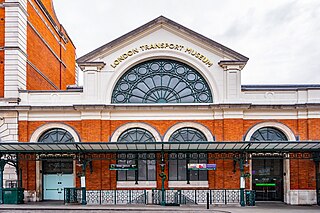
The London Transport Museum (LTM) is a transport museum based in Covent Garden, London. The museum predominantly hosts exhibits relating to the heritage of London's transport, as well as conserving and explaining the history of it. The majority of the museum's exhibits originated in the collections of London Transport, but, since the creation of Transport for London (TfL) in 2000, the remit of the museum has expanded to cover all aspects of transport in the city and in some instances beyond.

Wolverhampton Art Gallery is located in the City of Wolverhampton, in the West Midlands, United Kingdom. The building was funded and constructed by local contractor Philip Horsman (1825–1890), and built on land provided by the municipal authority. It opened in May 1884.

Korean arts include traditions in calligraphy, music, painting and pottery, often marked by the use of natural forms, surface decoration and bold colors or sounds.
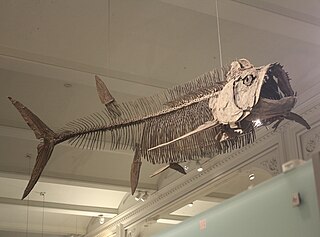
Xiphactinus, colloquially referred to as the X-fish, is an extinct genus of large predatory marine bony fish that lived during the late Albian to the late Maastrichtian. The genus grew up to 5–6 metres (16–20 ft) in length, and superficially resembled a gargantuan, fanged tarpon.
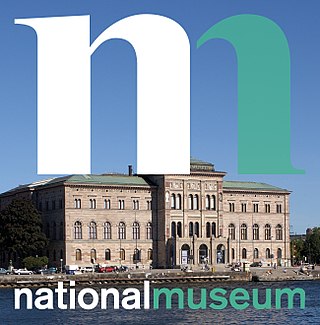
Nationalmuseum is the national gallery of Sweden, located on the peninsula Blasieholmen, in central Stockholm.

Philbrook Museum of Art is an art museum with expansive formal gardens located in Tulsa, Oklahoma. The museum, which opened in 1939, is located in a former 1920s villa, "Villa Philbrook", the home of Oklahoma oil pioneer Waite Phillips and his wife Genevieve. Showcasing nine collections of art from all over the world, and spanning various artistic media and styles, the cornerstone collection focuses on Native American art featuring basketry, pottery, paintings and jewelry.

Wedgwood is an English fine china, porcelain and luxury accessories manufacturer that was founded on 1 May 1759 by the potter and entrepreneur Josiah Wedgwood and was first incorporated in 1895 as Josiah Wedgwood and Sons Ltd. It was rapidly successful and was soon one of the largest manufacturers of Staffordshire pottery, "a firm that has done more to spread the knowledge and enhance the reputation of British ceramic art than any other manufacturer", exporting across Europe as far as Russia, and to the Americas. It was especially successful at producing fine earthenware and stoneware that were accepted as equivalent in quality to porcelain but were considerably cheaper.

Warren Murray Robbins was an American art collector, whose collection of African art led to the formation of the National Museum of African Art at the Smithsonian Institution.
The Museum of Bad Art (MOBA) is a privately owned museum whose stated aim is "to celebrate the labor of artists whose work would be displayed and appreciated in no other forum". It was originally in Dedham, Massachusetts, and is currently in Boston, Massachusetts. Its permanent collection includes over 700 pieces of "art too bad to be ignored", 25 to 35 of which are on public display at any one time.

The Minnesota Marine Art Museum (MMAM) is an art museum in Winona, Minnesota, United States, specializing in great art inspired by water. MMAM is a nonprofit art museum that engages visitors in meaningful visual art experiences through education and exhibitions that explore the ongoing and historic human relationship with water. The purpose-built museum is located on the banks of the Mississippi River and boasts six galleries, an educational and events space, and a destination retail shop on its seven acre riverside campus.

Leila's Hair Museum is a museum in Independence, Missouri that displays examples of hairwork dating back to the 18th century.
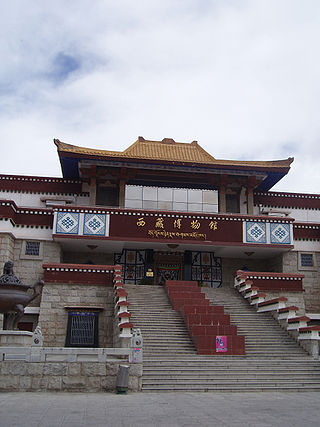
The Tibet Museum is the official museum of the Tibet Autonomous Region of China in Lhasa. Inaugurated on October 5, 1999, it is the first large, modern museum in the Tibet Autonomous Region. It has a collection of more than 520,000 artifacts, including pottery, jade, and Buddha statues, attracting hundreds of thousands of visitors every year. It has a collection of around 1,000 artifacts permanently on display related to the cultural history of Tibet, from examples of Tibetan art to architectural design throughout history such as Tibetan doors and beams. In order to fill the museum the Tibet aristocracy and religious establishment had their property confiscated by the Chinese Government.


















